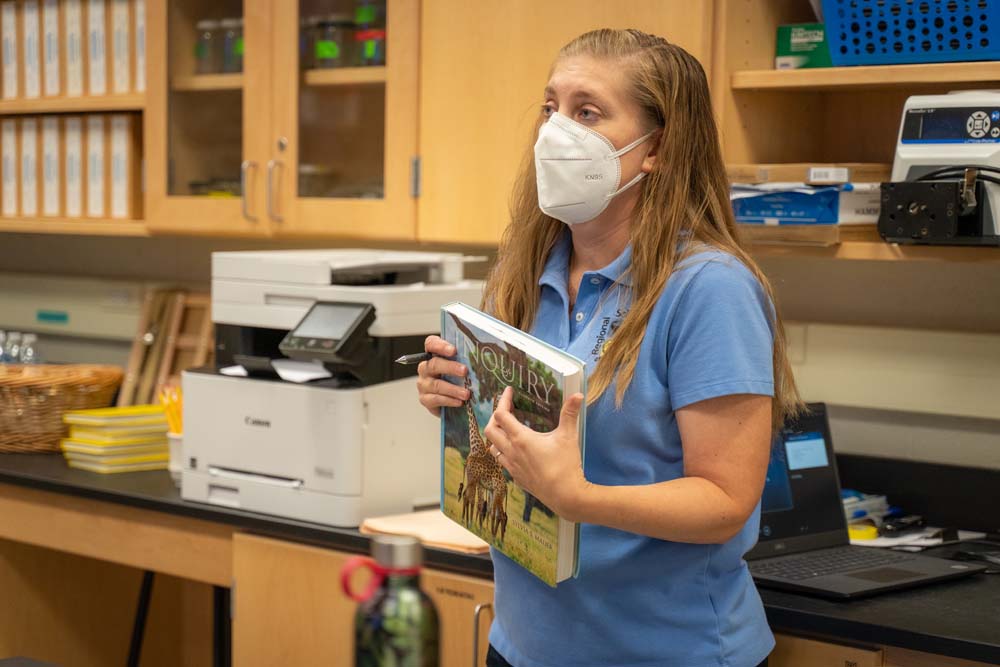Notes from the President
Chris Gray, Ph.D. | Founding President, Erie County Community College of Pennsylvania
Last week, I talked about the ways in which the student experience differs for community college students as compared to their compatriots at four-year residential campuses. This week, I think it would be useful to explain how the expectations and responsibilities of faculty differ at these two kinds of higher education institutions because higher ed can be quite mysterious to those less familiar with its structure. While each individual institution may have slightly different requirements, this post is nonetheless intended as a high-level overview to help highlight the essential differences between faculty responsibilities depending on the type of institution.
Faculty at community colleges are, first and foremost, teachers. They are considered discipline experts and usually hold advanced degrees in their field, but their primary focus is definitely on the student learning experience. They are often described as “teaching faculty” because that is the biggest portion of their job, and it forms the basis for their performance evaluations. At EC3PA, our faculty teach fifteen contact hours per semester during both the Fall and Spring semesters; this is often referred to as a 5/5 teaching load. Those fifteen contact hours are broken down into five classes, each of which equates to three contact hours, per semester. Some disciplines may have courses with more or fewer contact hours, but I’m using the basic baccalaureate transfer course as my example here. In courses like these, there are no teaching assistants, so our students get to know their teachers as our faculty get to know our students. Teaching is truly a faculty member’s full-time job at EC3PA!
Contrast this to four-year institutions, where teaching is but one of many core functions of a faculty member’s job. These faculty members often teach far fewer classes — usually two or three, though it can be as few as one per semester at flagship research institutions — but devote a significant portion of their time to original writing and research. If you’ve ever heard about the need to “publish or perish,” it refers to the necessity of research to a four-year college or university faculty member’s path to career advancement. Because four-year institutions often rely on large lecture courses to deliver content to their students, these faculty frequently rely on the help of teaching assistants, who are usually students in graduate degree programs in that same discipline. It’s not uncommon to have a supplementary discussion section following a large lecture; in this smaller group, students get a chance to review lecture material in more depth, thanks to the facilitation of a teaching assistant, who will also perform a good portion of the course grading. Some of these teaching assistants like this system and choose the four-year institution for their careers; at the same time, community college faculty likewise get their start in this kind of system and find themselves drawn away from research to the classroom.
When we choose our EC3PA faculty, we seek out faculty whose primary desire is to teach. While our faculty certainly are free to pursue their own research interests, they are not required to do so as part of their jobs. Instead, we want their focus to be on helping the students in their classrooms to learn. We likewise want to ensure that they remain current in their field of study through ongoing professional development, that they continue to develop and expand their pedagogical expertise and bring that back to their classrooms, and that they participate in service opportunities to the College and the greater Erie community as a whole. So, while teaching is their most important responsibility, we also want to ensure that our faculty are engaged with our students and our institution in meaningful ways outside the classroom as well. A couple of weeks ago, I talked about office hours and how those aim to serve our students; these are an essential complement to the work that our faculty do in the classroom. Office hours, too, are a chance for our faculty to continue to teach!
Our commitment, as ever, is to our students, and we need teachers who feel similarly. We eschew large lectures in favor of smaller, more intimate class sizes so that our faculty can interact with their students and forge meaningful connections to help them succeed. We believe in lifelong learning for our faculty so that they can continue to grow, evolve, and bring the latest information to our students. And at the end of the day, our faculty reflect our mission because they embody it in their classrooms.

